|
By Jessica Rath There are a few exceptional people who seem to have unlimited hours at their disposal on any given day, more than the 24 we ordinary mortals must make do with. Otherwise, how can they manage to get so much done? That was my impression when I recently talked with Dr. Fernando Bayardo, MD, long-time Abiquiú resident. He is the Emergency Medicine specialist at the Presbyterian Hospital in Espanola, the Director of the Emergency Department, as well as the Chief Medical Officer at the hospital. Besides that, he is the treasurer of the Mariano Acequia in Abiquiu, and the Rio Arriba county EMS medical director. Until quite recently he served as the president of the board of the AAESP (Abiquiú Area Emergency Services Project), a nonprofit organization he helped establish in 2001. Their goal was to support the Abiquiú Volunteer Fire Department with extensive fundraising. Besides that, Dr. Bayardo has a lovely family he spends a lot of quality time with, a beautiful house where he likes to perform any repairs and innovations himself if possible, and often takes his three children motorcycling, bicycling, hiking and kayaking to explore the beauty of northern New Mexico. See what I mean? Because I was a volunteer firefighter a long time ago and served on the board of AAESP, I have known Fernando since 2003 and have witnessed his indefatigable energy and his dedication to the community countless times. I wanted to learn more about his life, and he kindly agreed to an interview. Fernando was raised in Southern California and spent most of his early life in Escondido. He went to college at the University of California in San Diego. He comes from a long lineage of physicians: his father and grandfather were physicians, as well as several of his uncles and cousins, thus greatly influencing his decision to attend medical school. In addition, he had an interest in working with underserved communities and did a lot of volunteer work when he was in College: he volunteered at local clinics and emergency departments, and became certified as an EMT in San Diego County though he volunteered as an EMT in Tijuana, Mexico for three and a half years. “So, during college, this is where I spent my Friday nights”, he told me. That’s not how most college kids would spend their Friday nights, I think. That's brilliant. “So that kind of geared my interest in emergency medicine, and my interest in EMS. I wanted to help, I wanted to be involved. And I had an interest in working with people who probably have less access to quality medical care. I applied to medical schools nationwide and had the opportunity to attend the University of Illinois, Chicago. While in medical school, I did an elective rotation as a fourth year medical student at UNM. Because I used to drive between Chicago and San Diego and I loved New Mexico, I ended up applying for residency and being accepted at UNM”. While in residency at UNM, a note was placed in his mailbox that Espanola Hospital was looking for someone interested in working in rural New Mexico as an emergency physician. When he was getting close to finishing his residency, he looked around at different places in New Mexico and choose Espanola as the site to work. “Espanola offered several opportunities which interested me: it was in an area that I thought had the true practice of Emergency Medicine, where you did a little bit of everything. It’s an area with a very diverse population and includes people who would benefit from someone being an advocate for the patients and the facility. Also, I found the culture of this area to be very appealing, and it's a beautiful part of the country. I thought that I would enjoy being in this rural area”, Fernando continued. And when did you get married? I wanted to know. “I was married in 1994. My wife Maria and I will celebrate our 30th anniversary in June. It was between my first and second year of residency. I started working in Espanola and rented a home in La Mesilla. In the meantime, we purchased this property in Abiquiú and built our home here. We moved to Abiquiú two weeks after my daughter Brianna was born, in October of 1997”. “From day one, when I started at Presbyterian Espanola Hospital, I was also the director of the Emergency Department. Currently I am the Chief Medical Officer of the hospital as well and have been so for over 10 years. In that capacity, as an administrator, it gives me the opportunity to have greater influence on health care in the area and be able to recruit physicians and improve access for the population that we serve. This includes Rio Arriba County, as well as Santa Fe, Taos and Los Alamos County’s, we have patients from all over Northern New Mexico”. I wanted to learn more about Dr. Bayardo’s role as administrative director. What does this entail? “I recruit and interview all the providers that we hire and oversee all the providers that work at this facility in some capacity. Fortunately, I have the assistance of other medical directors in our clinic and in the hospital as well. I'm also involved with the business side of the hospital, whether it's expansion, staffing, and work closely with the hospital’s chief executive, as well as the hospital board. I work closely with the administrative and medical leadership of the Presbyterian Health Services statewide. It requires ongoing interactions, as there's lots going on at all times”. I was interested in people who don't have insurance. What happens to them? “Well, if you go back to the roots of this area, it was influenced by people who wanted to give, like Arthur Pack, who used to own Ghost Ranch. He sold his family stamp collection to fund the building of the Espanola Hospital '', Fernando went on. “The hospital provides healthcare for everybody. In the emergency department it doesn't matter if they can pay or not, we take care of everyone. In the clinic we have programs so we do whatever we can to accept and help as many patients as possible”. “Fortunately, part of my leadership role is to figure out what are the needs of the community, and how we focus on that. Though it's challenging, and there may be limitations we make efforts to expand. For example we are in the best place we've ever been to help patients with substance use disorder. We have two addiction specialists at our hospital, we have many, physicians who are able to treat people with addictions. We can even start substance use disorder treatment out of the emergency department and continue the treatment as an outpatient. So, we're in a much better position than we've ever been to help patients who need this service”. “I encourage people to look at addiction as an illness and we treat it as such. We realize that it's going to affect other medical issues and societal issues as well. So, if we can treat people and help them get back to normal lives, it's a benefit for everybody”. While some people often see addiction as a lack of willpower, it’s important to realize that the medical profession considers it to be a disease as other illnesses or chronic disorders. Clearly, recovery requires long-term treatment. We can be proud of Espanola’s Presbyterian Hospital’s leadership for providing such care. Dr. Bayardo’s three children continue the long family tradition of serving the community. His son Fernando is a paramedic. He was born at UNM, and got a Bachelor's degree in Emergency Medical Services. He also obtained a diploma in Mountain Medicine and did an internship with the Grand Canyon. He was employed at the Grand Canyon for two years as a paramedic and a search and rescue specialist. He now lives in Salt Lake City and works for an air medical transport company in Craig, Colorado where he is a base manager. He was married last September at the family home in Abiquiú. His wife is a surgeon, she is finishing a residency in Salt Lake City. Fernando’s older daughter, Brianna, was born at the Espanola hospital. She also attended UNM where she studied Speech and Language Pathology. She did her Master's at UNM as well. For two years she worked for the school system in Belén, and now works for a rehabilitation center in Albuquerque. The youngest, Mikaela, was born at the Espanola Hospital as well. She also attended UNM and is now in her third year of medical school at UNM. “So she is continuing the tradition for how many generations in your family?” I asked. “She will be a fourth generation Dr. Bayardo”, was the answer – quite impressive. I wanted to know more about Fernando’s constant involvement with his community. “I've always had an interest in population health, which is why I have an interest in what goes on in communities, what affects the health care in the community. That is one of the things that guides me and helps me in my career. I have an interest in EMS, and volunteered with the fire department. I saw the need to support the department in a more fundamental way, and that's how the nonprofit comes in. I got involved in the nonprofit which helped support the fire department and get it to a better position. I served the department in that capacity for many years. I still have an interest in EMS, and I am now the Rio Arriba County EMS Medical Director.”. “I'm a community faculty member for UNM. And we have students and residents that rotate with us. There's a rotation called the PIE rotation, the Practical Immersion Experience, that UNM medical students have between their first and second year of medical school. Near the end of the rotation, I take them on a hike to Tsi-p’in-owinge', and show them some of the local area and culture. After the hike they come to my home to eat. I want them to experience some of rural New Mexico that they may not be able to have an opportunity to see otherwise”.
I remember this hike, of course – in 2019, Fernando took a group of ten or so hikers to Tsi-p’in-owinge'. It was a successful fundraiser for the Fire Department. It’s amazing to see somebody with such a demanding profession find the time and energy to constantly give back to the community he loves. And his answer to my question WHERE he finds the time: “Sleep is optional”. Thank you, Dr. Bayardo, for this fascinating interview.
2 Comments
By Greg Lewandowski Image (c) Greg Lewandowski Valles is a wonderful place to visit in the winter. Quiet and peaceful offering miles of groomed snowshoe trails. It’s a short drive from Los Alamos and from my home in Medanales it took me about an hour and 20 mins. Some things to be aware of if you decide to go. You’re in a wilderness area with unpredictable wildlife, changing weather conditions, deep snow, and snow covered streams. Stay on groomed trails and avoid the trails that are groomed for cross country skiers. I bring hiking poles with snow baskets. The temps are much colder than what is listed on the internet. When I went it said 30 degrees when I got there it was 8 degrees. I warmed up quickly and the coldest spot is the rangers station. You can always call ahead. I always bring a GPS and a SAR device. Cell phone service is spotty. I took the trail that started at the second ranger station. It was an out and back trail 4 miles total. If you check in at the ranger station they can explain how to drive in or you can check with them about other trails. They have various trails to choose from.
I enjoyed the trail I took and look forward to going back for a longer trail. This one took just over 3 hours. I would say it was moderate with a total of 500 feet of elevation.There is a vast feeling of open space with mountain peaks in the distance. There is somethijng special about winter that gives a seense of peace and tranquility. I would advise calling ahead to check the conditions and the weather. If there has been a lot of fresh snow all the trails might not be groomed. By Sara Wright
Reprinted from Abiquiu News 3/20 Scientist Diana Beresford Kroeger proved that the biochemistry of humans and that of plants and trees are the same – ie the hormones (including serotonin) that regulate human and plant life are identical. What this means practically is that trees possess all the elements they need to develop a mind and consciousness. If mind and awareness are possibilities/probabilities then my next question isn’t absurd: Do trees have a heartbeat? According to studies done in Hungary and Denmark (Zlinszky/Molnar/Barfod) in 2017 trees do in fact have a special type of pulse within them which resembles that of a heartbeat. To find this hidden heartbeat, these researchers used advanced monitoring techniques known as terrestrial laser scanning to survey the movement of twenty two different types of trees to see how the shape of their canopies changed. The measurements were taken in greenhouses at night to rule out sun and wind as factors in the trees’ movements. In several of the trees, branches moved up and down by about a centimeter or so every couple of hours. After studying the nocturnal tree activity, the researchers came up with a theory about what the movement means. They believe the motion is an indication that trees are pumping water up from their roots. It is, in essence, a type of ‘heartbeat.’ These results shocked everyone. At night, while the trees were resting slow and steady pulses pumped and distributed water throughout the tree body just as a human heart pumps blood. It has been assumed that trees distribute water via osmosis (a process that defies gravity and never made sense to me) but this and other new finding suggests otherwise. Scientists have discovered the trunks and branches of trees are actually contracting and expanding to ‘pump’ water through the trees, similar to the way our hearts pump blood through our bodies. They suggest that the trunk gently squeezes the water, pushing it upwards through the xylem, a system of tissue in the trunk whose main job is to transport water and nutrients from roots to shoots and leaves. But what "organ" generates the pulse? Recently forest science researchers have found that the pulse is mostly generated by diameter fluctuations in the bark only. This was somewhat surprising, as traditionally it was thought that bark is totally decoupled from the transpiration stream of the tree. To better understand this mysterious situation, we need to have a closer look at bark. Bark can be divided into a dead (outside) and living (inside) section. The living section contains a transport system called phloem. The phloem relocates sugars – produced during photosynthesis in the leaves – to tissues, which require sugars for energy. The direction of transport then leads to a downward directed stream of sugar-rich sap in bark towards the roots. The phloem uses water as transport medium for these sugars, and under certain conditions it appears that this water can be drawn out of the phloem into the transpiration stream of the stem. Plant biologists were able to show that these conditions are most likely to occur during the rapid increase of transpiration in the morning hours. During this time, the tension in the capillaries that transport the water upwards in rapidly increases. Just like a rubber band, too much tension would cause the water column inside the capillaries to burst; this is one horrible way that trees can die during drought. To prevent this snapping, water from phloem is drawn into the capillaries, and the loss of water from the phloem causes the stem to shrink. Once the tension in the capillaries declines as a consequence of decreasing transpiration, the formerly lost water will be replaced back into the phloem, and so the stem expands again. The exact pathway of this water transfer takes place within the phloem that acts like a sponge that gets saturated and squeezed continuously. The only difference between our pulse and a tree’s is a tree’s is much slower, ‘beating’ once every two hours or so, and instead of regulating blood pressure, the heartbeat of a tree regulates water pressure. Trees have regular periodic changes in shape that are synchronized across the whole plant. It seems obvious to me that the ‘heart’ of a tree extends through its entire trunk just under the bark, the place where the pulse of a tree beats continuously. Part 2 Trees Sleep? In 2016, Zlinszky and his team released another study demonstrating that birch trees go to sleep at night (now we know that all trees – at least all the trees that have been studied so far - do sleep at night). Trees follow circadian cycles responding primarily to light and darkness on a daily cycle. The researchers believe the dropping of birch branches before dawn is caused by a decrease in the tree’s internal water pressure while the trees rest. With no photosynthesis at night to drive the conversion of sunlight into simple sugars, trees are conserving energy by relaxing branches that would otherwise be angled towards the sun. Trees increase their transpiration during the morning, decreasing it during the afternoon and into the night. There is a change in the diameter of the trunk or stem that produces a slow pulse. During the evening and the night tree water use is declining, while at the same time, the stem begins to expand again as it refills with water. When trees drop their branches and leaves its because they're sleeping. They enter their own type of circadian rhythm known as circadian leaf movement, following their own internal tree clock. Movement patterns followed an 8 to 12 cycle, a periodic movement between 2 – 6 hours and a combination of the two. As we know, plants need water to photosynthesize glucose, the basic building block from which their more complex molecules are formed. For trees, this means drawing water from the roots to the leaves. This takes place during daylight hours. The movement has to be connected to variations in water pressure within the plants, and this effectively means that the tree is pumping fluids continuously. Water transport is not just a steady-state flow, as was previously assumed; changing water pressure is the norm although the trees continue to pulse throughout the night as tree trunks shrink and expand. The work is just one example of a growing body of literature indicating that trees have lives that are more similar to ours than we could have ever imagined. When we mindlessly destroy trees we are destroying a whole ecosystem and a part of ourselves in the process because we are all related through our genetic make up. A sobering thought, for some. By Zach Hively Early peek at big book announcement.If you can *bear* it!Zach Hively Okay okay okay, I have some big news a long time coming, and I don’t want to bury the lede, except to say that I appreciate you all SO MUCH for subscribing to my writings here that I want you to be the VERY FIRST to know: I have a new book coming out.It’s called Call Me Zach Hively Because That Is My Name. It will come out in September of this year. And it looks beautiful, thanks to designer supreme Hayley Kirkman. Call Me Zach Hively is a collection of Fool’s Gold columns, edited (yes, the columns are really edited! if you can believe it!) to fix all the things I realized I could have done better the first time. These have never all appeared in one place before, so if you have always read me exclusively in the Durango Telegraph or the New Mexico Mercury or the Four Corners Free Press or in the john, you’ll find new things here.\ My publisher, Casa Urraca Press, and I are also trying something new (for us) with this book. We’re going to be launching it on Kickstarter, which means a lot of things for you: you’ll have a chance at early advance reader copies (ARCs) of the book, exclusive hardcover editions, and getting your name ruined celebrated in the book itself. I’m going to announce this book & the Kickstarter launch to the general public soon. But like I said, I want to let you know first, because you care enough to subscribe. (Thank you, mil gracias, and dankeschön — endlessly.) What can I do to get my copy & support your awesomeness?Great question! You can:
But frankly, it has been a while. I finished the first complete draft of this book more than six years ago. I holed up with my dog Wally in an Airbnb in Albuquerque between Christmas and New Year’s Eve to finish it off. And then I printed it. And then I awaited my fame, fortune, and riches. But it turns out, you have to actually get the book published to have even a SHOT at fame, fortune, and riches. So even though it’s taken more than 15% of my life to get from draft to book, we’re here.
And frankly, I wouldn’t be here without those of you who let me know you laughed, or that you barfed, or that you thought I gave it a good effort. Especially those of you who kept asking when this book was coming. This exists because of — and for — all of you. And for that, you have my gratitude. Zach Check out the Kickstarter here! © 2024 Zach Hively PO Box 1119, Abiquiú, NM 87510 Unsubscribe Moderation, schmoderation
By Zach Hively Anything will kill you, eventually. Sunlight, oxygen, arsenic and uranium in the water. Heartbeats wear the heart out. Anything, that is, but pleasure, too much joy, love, gratitude for this chance to burn poison for fuel and become, for a while, a wondrous beast of delight and awe.
Via newfangled moving picture technology
ZACH HIVELY You never know what to count on when doing a poetry reading. I mean, yes, I can count on not selling out Hyde Park or Madison Square Garden. But will people show up for free snacks, then feel guilty enough to stay through a couple poetry readings? Sometimes, though, people delight you. I was delighted yesterday at El Rito Public Library, up the road from here in northern New Mexico. This is not a large community. But still, more people showed up than I could count. (Remember: English major. I can’t count that high.) They all paid attention while I read. And then the ones I didn’t drive away stayed for another poetry reading with my friend and neighbor, Oro Lynn Benson (author of Because of the Sands of Time). I saw people I communicate with by email frequently. I met people in the flesh I’ve only ever seen on Zoom. And then we all signed up for library cards, because that helps the library’s numbers for funding. Also, I gotta say: the El Rito Public Library is a gem. It’s the warmest, most welcoming adobe, with gorgeous wood floors and rich sunlight and at least three friendly librarians, who did not shush me once — and I was not exactly quiet. It got me wondering about a road trip with stops at every small-town library. Wouldn’t that be delightful, in its way? Anyway, here is a video of my poetry readings yesterday afternoon, from Owl Poems and Desert Apocrypha. Thank you to Lynett, the El Rito library director, for making this (and so much more) possible, and for the greatest introduction I’ll ever have. Thank you, Oro Lynn, for inviting me to read with you. And thank you to everyone who attended, not only for supporting us poets, but for supporting libraries. If you need a pick-me-up this week, go check out a book from yours.
Thank you for reading Zach Hively and Other Mishaps. This post is public so feel free to share it.
Share By Jessica Rath There are so many fabulous people in our little town of Abiquiú. When I chatted with Analinda Dunning a little while ago, her late husband Napoleón Garcia’s oldest son, Leopoldo Garcia (called Leo, for short), joined us and shared many stories with me about his life and his family. I remember my first Abiquiú Studio Tour, in 2001, and I visited Leo’s gallery, the Galeria de Don Cacahuate, the peanut gallery, as he explained. I had just moved to New Mexico from California; the carved wooden sculptures of Saints – bultos – and the paintings (retablos) were a form of folk art new to me. I learned from Leo that he has continued a tradition that had been in his family for generations. “My uncles, my father's brothers, were all woodcarvers”, Leo told me. “On his side of the family, the Garcias, they were all sheep herders. They would carve wood when they would take care of sheep. But it ran on both sides of the family. On my mom's side, the Ferráns, they were French and Spanish. They were painters, they still are. My cousins and others from that side are painters. But I taught myself the basics of woodcarving”. Analinda elaborates: Leo’s grandfather on his mother's side is Joe Ferrán, the Gym in the Abiquiú Pueblo is named after him. Joe Ferran collaborated on many village projects in the first half of the 20th century with Martin Bode. Leo inherited artistic talents from both sides of his families. Leo’s children continue the family tradition: “My granddaughter Gabby is a fantastic artist, and my son, Joe Paul, is an artist as well. The only one in my immediate family that doesn't do any art is my daughter Jennifer. But Jennifer excelled in other things. She has been a long-time department manager at a Smith’s Grocery in Albuquerque. She owns her own home and is the caregiver for her younger brother, Leo. My son Leo was a fantastic artist. We did a lot of art shows together.Actually, he was better than me. But then he got sick. He's still doing art, where he lives in Albuquerque. My son Joe Paul also does wood carvings. My brother Howard and some of my other brothers also carve! So I’m really fortunate to be part of this inspiring family.” Leo is proud of his gifted children. “My granddaughter Gabby, she’s the youngest, she just turned 19 and she will go to the design school in Santa Fe, where she plans to study computer graphic arts”. Leo has two sons and a daughter, and a son who passed away. And he has four grandchildren; they all live around Abiquiú. Somehow, I assumed that Leo also had lived around Abiquiú all his life, but was I ever wrong! He actually had moved all across the United States. While in the US Navy, he met his wife on Padre Island near Corpus Christi, Texas, where he ended up because he always loved the ocean, he told me. They married in 1975 and moved to Gulfport, Mississippi, where his wife’s family lived. But they didn’t stay there long, and in the late 80s or early 90s they returned to Abiquiú. When he was in the military, Leo was stationed in Alameda/California. He often visited Berkeley, where I was living then – who knows, our paths may have crossed! “I loved the community in Berkeley, Telegraph Avenue, the UC Berkeley Campus. I remember the Hare Krishnas hopping and dancing around; they were so much fun to watch!” Well, this certainly evoked my memories and we could have reminisced for hours. But Leo has another feather in his cap I knew nothing about: he owned a plumbing business, and he also taught plumbing at the Northern New Mexico Community College for almost ten years. “I had my own plumbing business, I did the plumbing for all the big houses up in the mountains. I took a class in El Rito, way back in the early 70s. And then later on a friend of mine, Lorenzo Gonzalez who was the director of the industrial arts programs, asked me if I would be willing to become the plumbing instructor. I told him that I’d love to. So I would work in El Rito for the Northern New Mexico Community College, and I received my certification from the University of New Mexico. I taught there for almost ten years”. “I taught a lot of kids from around here; of course, they're not kids anymore. Some of them have gone on to have their own big plumbing businesses and are doing really well for themselves. It often happens that I’d run into one of them and he’s telling me, thank you for what you taught me. That gives me a lot of satisfaction. I also taught art classes in the Pueblo right at the Parish Hall. Over the years, I've taught a lot of people how to make St. Francis bultos, and retablos, and other stuff. Some of them have gone on to become really famous artists and make pretty good money.” “After I stopped teaching at the Community College I returned to my plumbing business, and I did this until I got badly hurt on a job; I ruptured some discs in my back. That’s when I decided to retire, and I opened my gallery which I’ve run for over 30 years now.” Leo loves Abiquiú. All his brothers and sisters also live around Abiquiú. His father, Napoleón Garcia, had ten children, three daughters and seven sons. Except for one sister who fell in love with El Rito and lives there now, and another sister who lives near Truchas, they all live close to Leo.I learned more about Napoleón as well: he had worked in Los Alamos for over 30 years. “When he retired, we talked him into opening a gallery, his own gallery, because he was always telling us all these stories. So he opened up the gallery, and before you knew it, people were coming from all over the world to hear my father's stories. He lived for another 20 or 30 years after he retired, whereas many of the people that he worked with in Los Alamos passed away soon after retiring. Well, my father was a very unusual character. After he opened the gallery he started carving, making ladders, bultos, and carving other things, painting things. He made a lot of walking sticks. Carving started to come out of him, you know what I'm saying? So, he did carve, and I learned a lot from him, from him and from my grandfather, especially when it comes to work ethics.” “People still come to the gallery looking for him. It kind of makes me sad, but it also makes me happy that people are still thinking about him.”
Thank you, Leo, for sharing your life with me. Abiquiú is like a rich tapestry with many distinct illustrations, all woven together. Only when one looks closely can one distinguish the details and begin to get a better understanding. A warm Thank You to Analinda Dunning for providing the lovely photographs. Who has time for this? And can I have some of it? ZACH HIVELY FEB 1, 2024 Listen up, especially if you have already fallen behind on, or off of, or under your New Year’s resolutions: It turns out that, in my own personal estimation, the concept of a New Year’s resolution is a stupid one that we should all feel free to ignore. I mean, who is society to tell us that we need to become better people, anyway? The whole New Year holiday is probably just a product of Big Resolution, or the patriarchy, or Hallmark, or some other cabal that wants us to feel, generally, like we need to be better than everyone else, or at least better than ourselves. New Year’s resolutions require me—and probably you, but let’s stay focused here—to imagine I will wake up on a specific date with a drive, efficiency, rigor, and timeliness heretofore unrealized in a lifetime of Januarys. Resolutions make as much sense as believing I will stop texting at red lights just as soon as my odometer turns over. But for real this time. That said, I have decided this year not to be a better person, certainly, but to be a person better at time management. We’re already several weeks in, and I’m very nearly ready to get started. And I am going to start with brushing my teeth. Which, let’s be clear, I already do!—because I hate lying to my dental hygienist about more than just the flossing. But I have resolved to become better at managing my time while polishing up my pearlies. Here’s what happens when I’m brushing my teeth: I don’t know what happens. I think I am getting to bed at a decent hour, sometimes defined as “still nighttime.” All that’s left to do is brush my teeth, which I have somewhere in my mind should take three to five minutes. I load up those bristles with paste and get to it, with all my focus and presence to ensure each tooth gets a fair shake. I finish. I spit. I rinse. And I see that twenty, thirty, sometimes even more than fifty minutes have passed, and these I cannot account for. This experience, not unlike intergalactic wormhole traveling, overwhelms me with ominous questions regarding the truths of time and space. Such as: if I brush my teeth for half an hour each night, do I still need to brush them in the morning, or have I met my daily aggregate quota? And: should I set a timer for myself to keep on track, or would I just brush right through it, much like I snooze through my A.M. alarms because I’m so tired from brushing my teeth all night long? These are the great unanswerables. And, like the Carpenters, we have only just begun. Because, in much the same way I have lost years of my life to long-form dental care, my entire morning typically passes by unaccounted for. Some nice public servant, like the woman at the post office or my therapist, can ask me how my day has been. “Good,” I will say. “I got up with my fourth alarm, made breakfast, put on clean pants, and here I am.” To which they always say, “Zach, it’s three o’clock.” They’re right. Many hours pass between getting up and leaving the house—and I cannot account for most of their whereabouts. But the hours feel full. I do not experience the wasting of time. Nor do I experience coffee taking 45 minutes to make, or breakfast two hours, or running out of time to put on clean pants so I fib about that part to save face.
The truth is out there. To find it, I think I need to make the mystery less personal. It’s not about how I, me, Zach, suck at time management, or executive functioning, or baseline life necessities. No, no! There is a cause here, a scientific one possibly, that I can puzzle out if I just become a dispassionate self-observer. Like a zoologist. Jane Goodall is, unfortunately, both expensive and also unavailable to mentor me. So I have contemplated buying a nanny cam to record my mornings and chronicle what, exactly, I am doing around here. Do I stare at walls in a fugue state? Do I have a second identity living inside me who timeshares this body? Have I simply lived my life so far under extreme misconceptions of time and how much of it I really have? This attitude makes me believe I have better things to do than order that nanny cam, and not only because I am too close to deadline for it to arrive before then. After all, there is a life to be lived, with whatever time I’ve got! Plus, if I record my entire morning, then I will spend my entire afternoon reviewing the nanny cam. And if my usual relationship with time continues its current pattern, it will take up my entire evening, too. And then I really won’t have time to floss. Thanks for reading Zach Hively and Other Mishaps! You can subscribe for free to Zach's Substack to receive weekly short writings -- classic Fool's Gold columns, new poems, and random musings. By Jessica Rath One of the reasons for Georgia O’Keeffe’s fame is her biography, I’m sure. To travel on her own, to live by herself in a region that’s even today considered a bit backward and “wild”: that’s courageous, don’t you agree? Many have followed her trailblazing footsteps, and Abiquiú tempts artists and writers and those with unusual dreams with its blue sky and its incomparable scenery, which hasn’t changed since Georgia’s days. Recently I had a lovely conversation with Analinda Dunning, wife of the late Napoleón Garcia, an Abiquiú Elder and Genízaro who was quite famous because of his art and his storytelling. I had met Analinda here and there, at the Abiquiu Chamber Music Festival where she and Napoleón were regular guests, at the Farmers’ Market, and on other occasions. Also, I own a copy of The Genízaro & the Artist, the book which they had written together. So, I was always curious: how did she end up here? Where was she from? When she agreed to an interview for the Abiquiú News which Napoleón’s son Leo Garcia joined too, I finally found out. Analinda was born in Ottumwa, Iowa. Because of her father’s employment the family moved several times and they lived in Auburn, a college town in Alabama, and in the neighboring town, Opelika, until she graduated from high school. When the family moved to California, she attended college and eventually started working for the federal government, as an entry-level employee. This was in the early 60s, and the federal government started to automate their manual systems. She was working in an office in Pasadena when they installed a huge IBM System. The manual database Analinda maintained on 5X7 cards was to be the data base of the automated system. She was involved in the design and training of this effort. It was the start of her 30-year career with the federal government. I was impressed when I heard that. This was the time of huge mainframe computers, and until at least the late 80s the industry employed mainly men. Analinda ended up working in the Commerce Department in Washington DC and then got an early retirement. After that she decided to get a teaching degree and she taught in elementary schools in northern California for 15 years. And now it gets really interesting: “I was doing family genealogy”, she told me, “and I discovered that I had an ancestral grandfather in Kentucky who was acquainted with William Clark, of the Lewis and Clark Expedition. My ancestral grandfather planned to go with them on their expedition to find the Northwest Passage. At the last minute, though, he became ill and was unable to go”. “But when they had the Bicentennial for the Lewis and Clark Expedition in 2003 - 2006, I decided that I would go and complete my ancestral grandfather's dream of discovery with Lewis and Clark. So I got a small trailer,and my golden retriever, Marcella, and I started out. It took me three summers because I was teaching, I could only travel in the summer. I went to Monticello where Jefferson started it all, and went to Ohio and Kentucky where my grandfather would have joined them. It took me three summers to follow the trail, all the way to the Oregon coast. The result was that I fell in love with that kind of traveling with my little trailer and my golden retriever who enjoyed the water. We were following the Missouri River, so she stayed wet and muddy most of the time. And when that was over, I decided to pack up everything, hit the road, and just see what's out there. I quit my job, and then I packed up my little trailer and spent some time first in Southern California and then in southern New Mexico”. Analinda was 68 then; an age when most people have settled into a comfortable lifestyle. Only an adventurous spirit would choose to travel around in a little motorhome. Even a fairly luxurious RV with a shower and a kitchen etc. is tiny, compared to a house. On the other hand, if you’re up to it – what a glorious way to move around! And now I finally learn how she and Napoleón met. Here is what she told me: “ I visited Santa Fe and was camping at Abiquiu Lake. When I was ready to leave I realized I hadn't taken a picture of the church here in Abiquiu. So the day I was leaving…”, Leo, who had joined us a bit earlier, is laughing. “You know what’s coming next!” Analinda says to him. “The day I was leaving, I drove into Abiquiu to take a picture of the church. I parked right in the middle of the plaza like all the tourists do, and Napoleón came out and said ‘Oh, come in, come in’. And I said no, I'm gonna leave tomorrow. I've already seen everything, I even got to visit the O'Keeffe home. I thought, what can he tell me? I've done it all. But I did visit his gallery. Napoléon likes to tell the story by adding that he came out to sprinkle some magic dust on me. Must have worked! My life changed on the dime, you know, and I ended up staying for three or four more days. We communicated and I came back and have been here ever since. We married in 2008”. “Napoleón has been gone now for seven years. And when he passed away, more than one person would ask me, ‘Well, what are you going to do now? Where are you going? Are you going to go back to California?’ And I just sort of looked at them, sort of perplexed, because he taught me how to love this whole area. Not only did I fall in love with him, but I fell in love with his story, and the things that he believed in. I couldn't think of being anywhere else but here”.
I totally understand this. I grew up in Germany and traveled to many foreign countries all over the world before ending up in northern New Mexico. There’s something magical and captivating here that I’ve found nowhere else. I asked Analinda whether she and Napoleón traveled together? Or did they just stay in Abiquiú? “He was already walking with a cane and it was hard for him to get around easily. But we did, we took a couple of trips to California because I had friends and family there that I wanted him to meet. And he enjoyed my little trailer. But it was uncomfortable for long trips. So I would take it out to the lake and we would stay two weeks at a time. We had friends come by so we had the ambience of camping life, but we were only ten miles from home!” Analinda had traveled extensively before settling in Abiquiu. She had made several trips to Europe and to the Holy Land. The Caribbean was a favorite vacation location for east coast residents. In 2022 she completed her visits to the 50 US States with an Alaskan cruise and trip to Denali National Park, Alaska. Napoleón had been to foreign countries as well, traveling to Europe in earlier years, Analinda told me. He was connected with a church in Espanola which had missions in Nicaragua. He got permission from the Catholic Church to join this missionary effort, and they built little churches and homes for people down there. He did that seven or eight times. I had no idea that Napoleón helped to build homes for people in Nicaragua. But he really enjoyed that type of giving, said Analinda. He was 85 when he died, but he seemed younger to me… “Well, that’s because he was young inside, he was always vibrant”, Analinda explained. “Some old people just sit around and wait to die. He never did that. He was in hospice for a year before he passed away. And returning tourists would come to the door because they knew him from past visits. I would explain his condition and ask whether they’d like to go in and talk to him, because he loved visitors. He was always polite and very gentle. He always made the person feel remembered and welcome”. “To be remembered, that's the greatest legacy you can have”. Analinda also radiates this warmth, just like Napoleón and his family. Talking to her and Leo made me remember how warm and welcoming he was, he always made you feel special. I learned a lot from our conversation! Leo will be featured in two weeks – stay tuned. By Gregory Berg Not a watering can, a drip torch.
Same metal shape with balance in hand: 50/50 gas and diesel. Slight tilt, fuel to wick, steady drizzling fire. Benzene soaking leaf litter, roots, fungi. Optimum conditions for the mosaic burn pattern. Generations of nest, now kindling. Little roasted voles, red sizzling berries, smoke in the eyes of a lumbering dove. Homes of bark and stem, burrows of duff turned to ash. Thirteen million square feet at Aztec Springs. Six hours without refueling. If the world were turned upside down, rabbits would be falling into fire. |
Submit your ideas for local feature articles
Profiles Gardening Recipes Observations Birding Essays Hiking AuthorsYou! Archives
September 2025
Categories
All
|
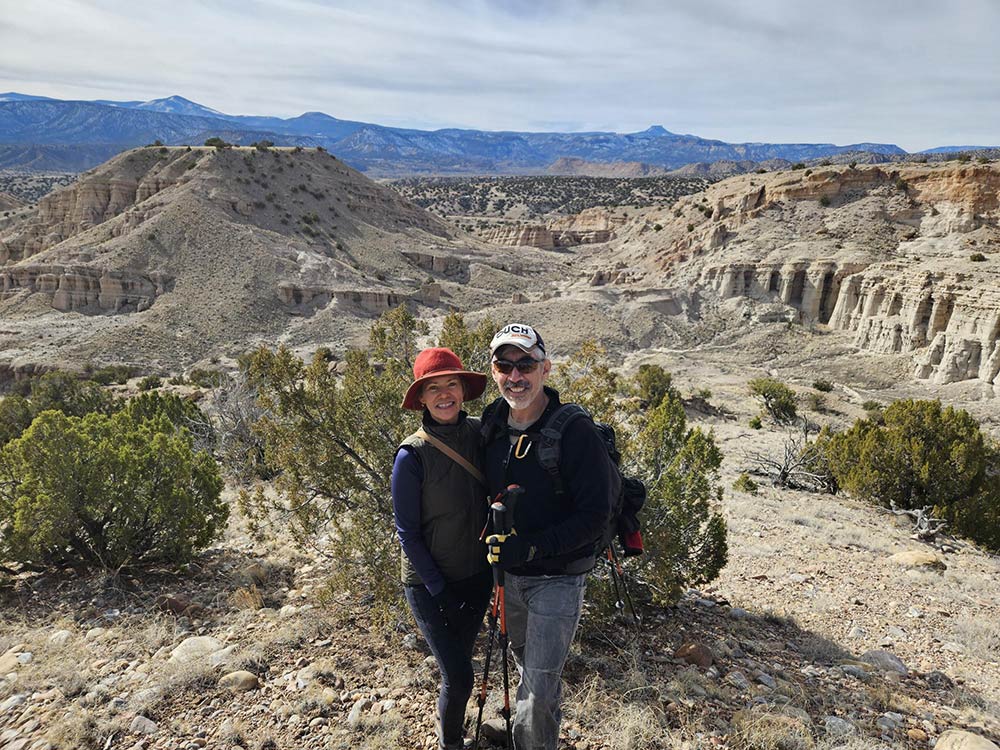

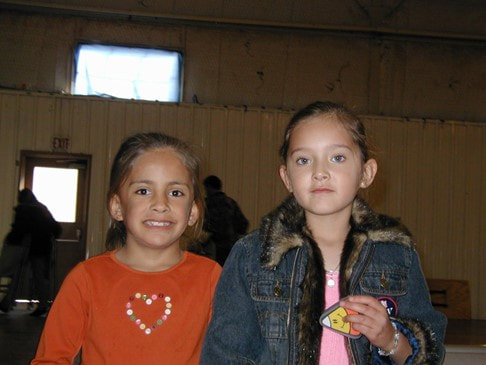


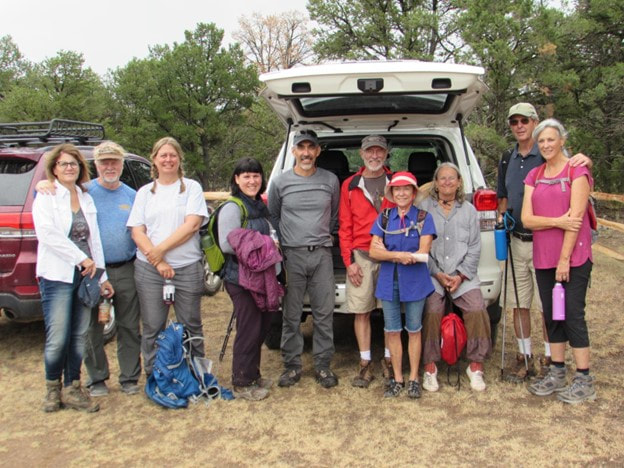
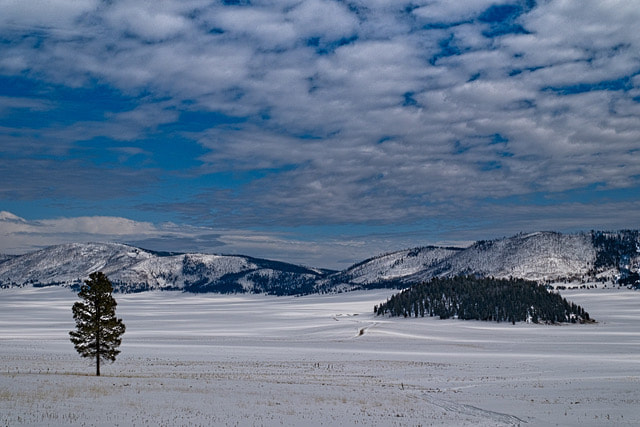
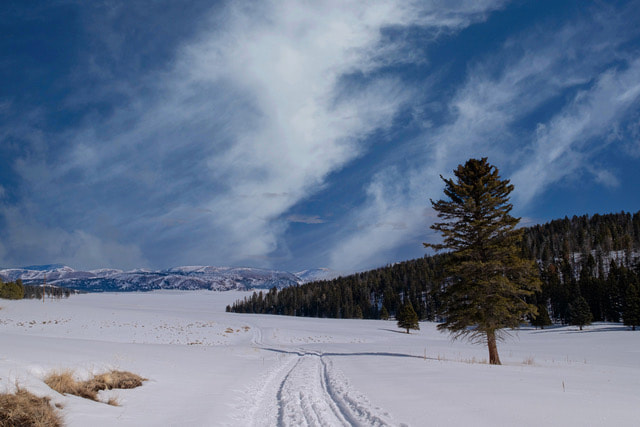

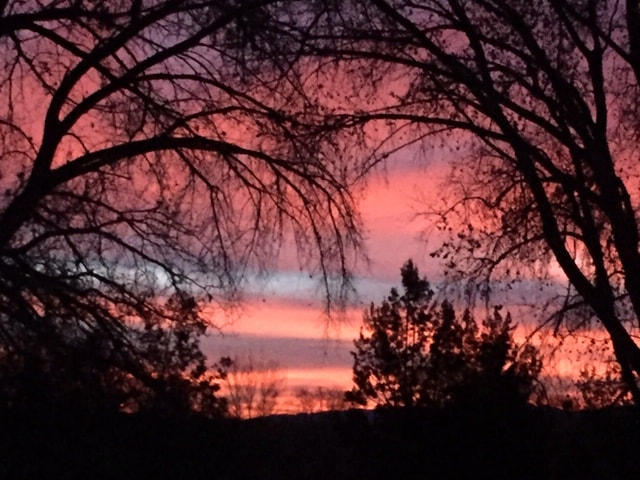
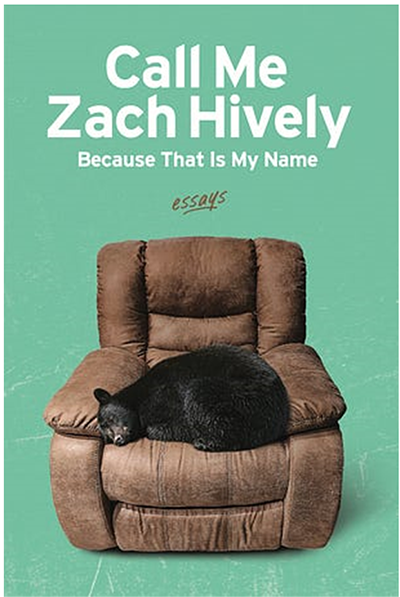


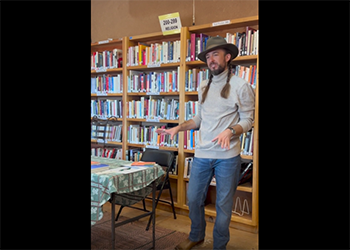
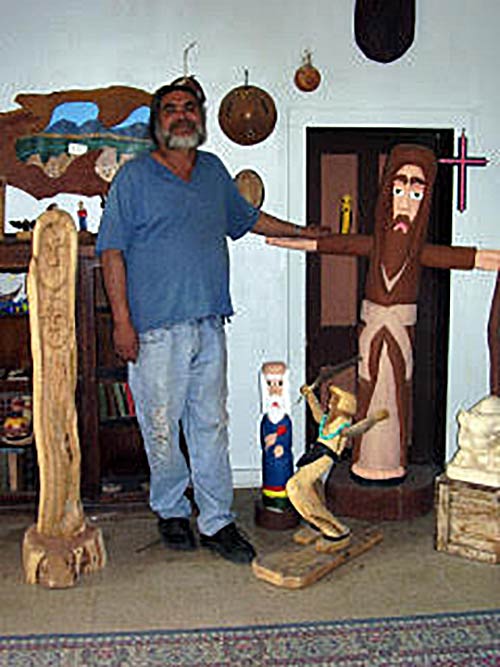

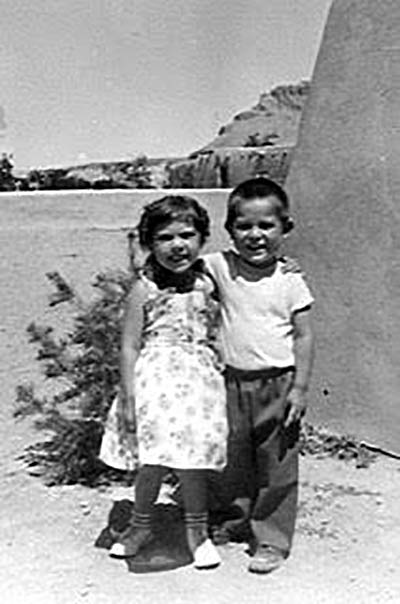

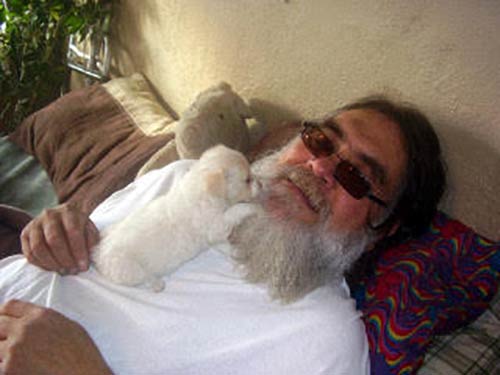
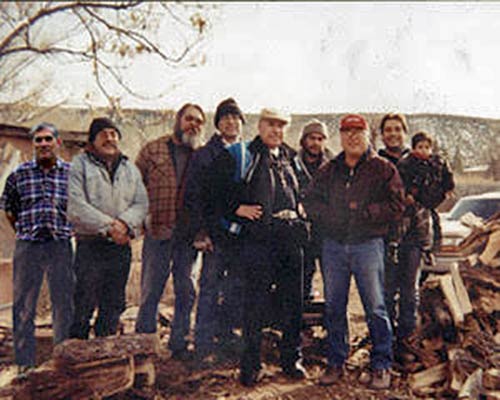
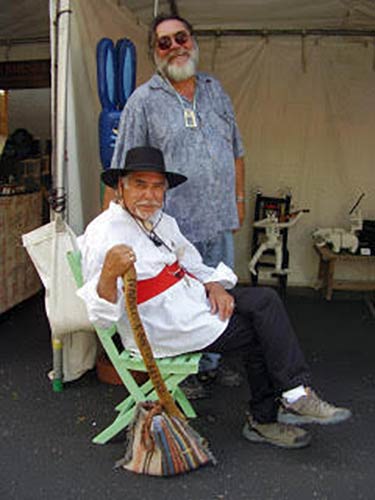
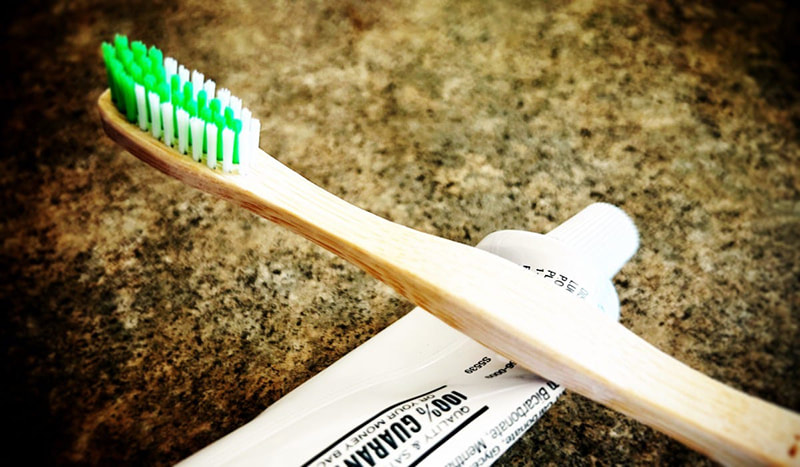
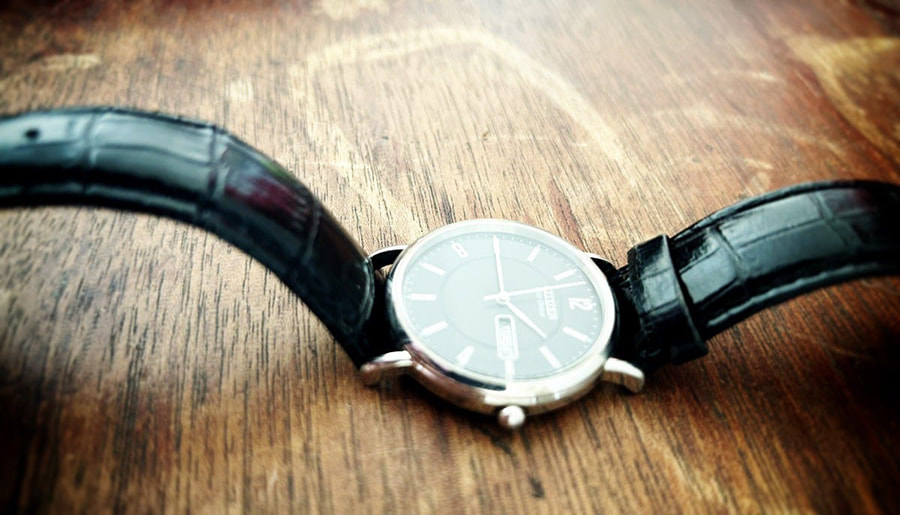
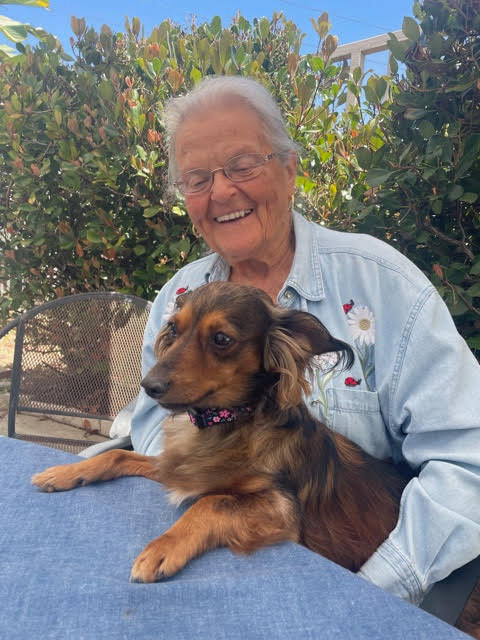
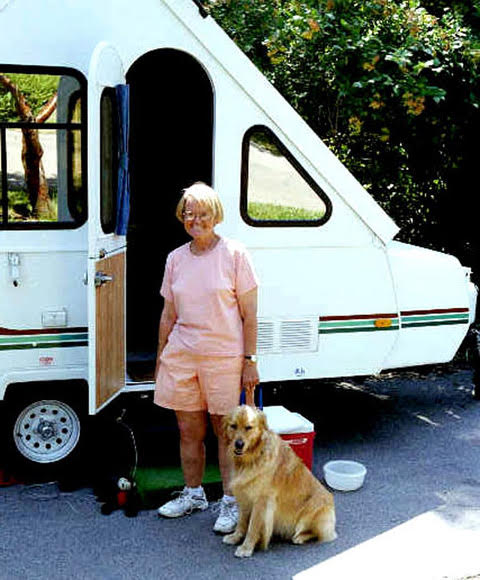
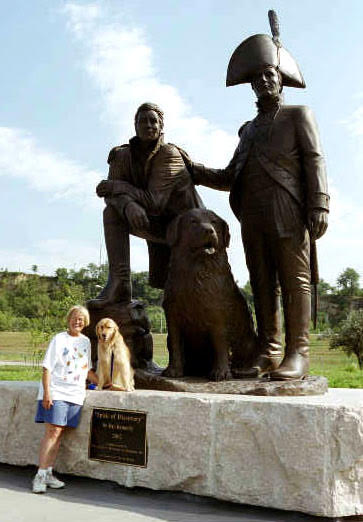
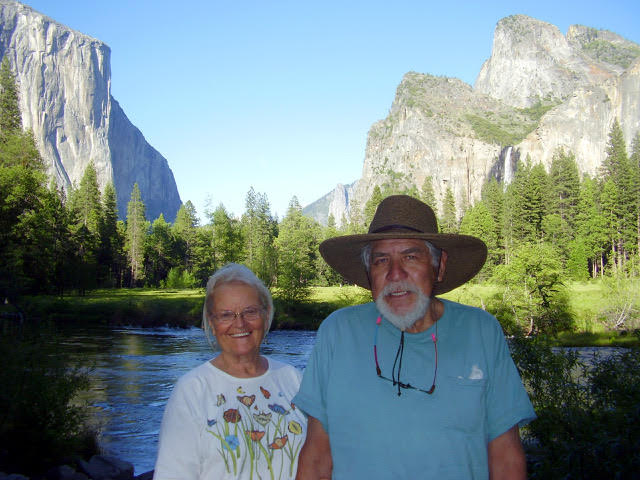
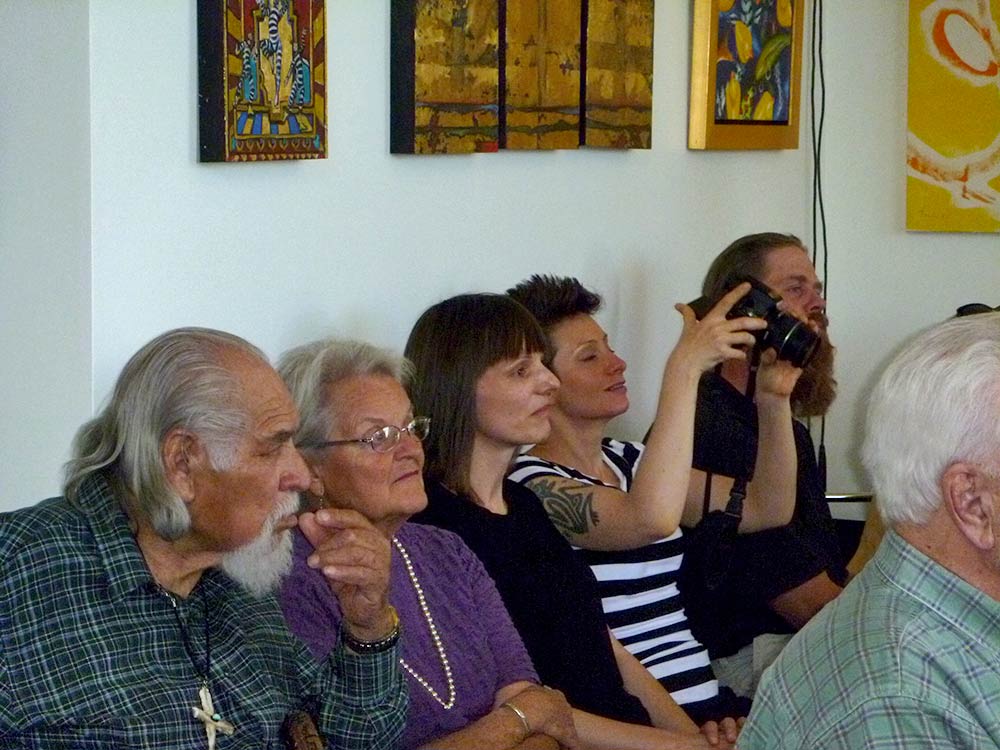
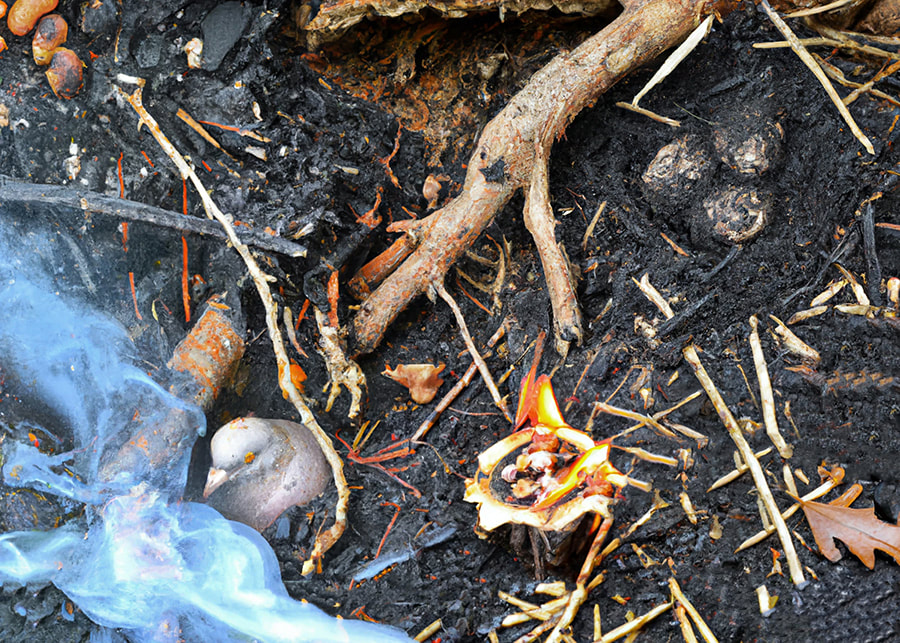
 RSS Feed
RSS Feed